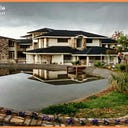Timing is Everything-Using Short Student Attention Spans to Your Advantage in the Classroom
The old proverb “timing is everything” is as accurate in education because it is in life. For lecturers, developing an in-class period or lesson will depend on how effectively it’s structured. And several boarding schools in India, for instance, Ecole Globale, try to develop a proper schedule for teachers just like the cliche concerning initial impressions, the approach lecturers spend their initial ten minutes during a class sets the tone for the rest of the time. Similarly, the approach lesson time is structured impacts student understanding and retention.
Ready, set, go: lecturers would like techniques to harness students’ attention and energy as presently as they arrive within the classroom.
Students enter the classroom with divided attention. On the far side, daily distractions such as smartphones or alternative technological toys. Children have lives outside the four walls they spend for a brief time. It’s typically troublesome for them to cast friends, sports, or maybe other classes from their minds as they practice the classroom.
Beginning class with effective transitions
Much like the hook of a well-descriptive essay, lecturers would like methods to capture the attention of their students in the initial 10 minutes of class. James M. Lang, English Professor and Writer of “Small Teaching: Everyday Lessons From the Science of Learning,” urged many techniques for lecturers to do in an article on the subject in the “Chronicle of Higher Education.”
- Ask queries regarding today’s topic
Start with some queries and ask students to think about the solution. Make sure that the queries related to the reading from the previous night or the lesson for that day. Lang advises lecturers to take care to come to the queries at the end of class.
- Activate prior information with recaps
Begin the class by asking students to recap what was lined within the last class. This is often a natural way to facilitate students access their previous information, thereby serving to them to create upon their previous information. Moreover, the method of asking students to recall information helps to confirm students remember the knowledge.
- Short writing exercises facilitate students focus
Ask students to do a short and quick writing activity. This can be wiped out tandem with the higher than two suggestions, or, or else, lecturers may ask students to reply to a quote or prompt. Lecturers will collect these responses for participation points or walk around to confirm students complete the work.
Effectively setting up the beginning of the lecture ensures that students have interaction within the course content from the very beginning, that higher allows students to access and retain.
Using student-centered pedagogy to battle short attention
Students within the twenty-first century don’t have the same attention span as students did ten or twenty years past. Academic analysis has found that students target one activity from 10–18 minutes, between seven and eight minutes, or maybe as low as 2 minutes. The analysis shows that whereas students usually lose focus for under a minute before they refocus, their ability to keep up attention diminishes throughout the class period. In addition, students focus additional effectively once lecturers integrate into student-centered pedagogies.
Considering that students are additional actively engaged at the start of the class except for the first couple of minutes when they are settling in, it’s going to be more effective to start classes with lectures and shift to activity concerning 20–25 minutes into the class amount. From there, lecturers will come to recap the activity, which will promote student interest and engagement because it is a result of the activity that they just completed. Regardless of the structure, analysis shows that integration in activities ensures and switching up content delivery modes helps to keep up student interest.
Structured class periods improve student learning.
Timing is everything, and lecturers who carefully structure the class period ensure students are ready to activate previous learning, effectively receive information and remember the knowledge they learned.
Elias Eliadis Amy Cottreau Matilda Swinney Amy Cottreau Amy Cottreau OldManNana
